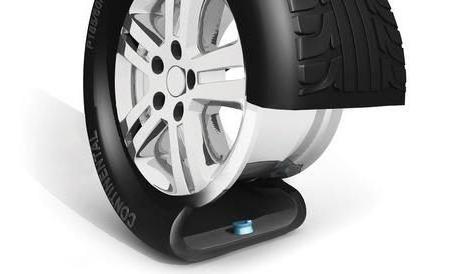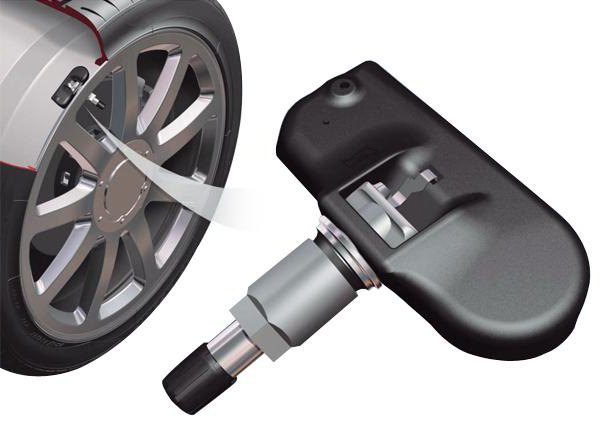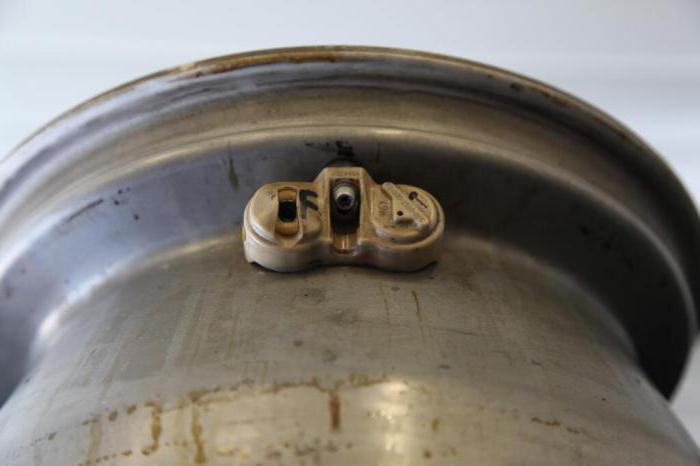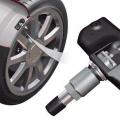A modern car is a whole complex of interconnected systems. Wheels are the part of the car, on the condition of which the safety of both the driver and passengers depends. Therefore, experts recommend regularly checking. To simplify this procedure, there is a TPMS system. What is this tire pressure monitoring system and how does it work? All this and not only - further in our article.
What is it?
This system has the function of preventing the vehicle from driving with low pumping level. It is offered as an option. On some cars (in particular the premium segment), it is already in the "base". If your car is not equipped with TPMS, it can be installed separately. Now these sensors can be purchased at a price of 3-4 thousand rubles per set (for each wheel). This equipment can be found on many machines manufactured before 2000. Moreover, this option is mandatory in some countries in Europe and Asia, as well as in the United States.
Design
Such equipment works due to the sensor, which is installed on the disk, inside the tire. The system includes several components:
- Control block;
- LCD display;
- receiving antenna;
- tire pressure sensor.

The principle of operation ("Tucson Hyundai" is no exception) is the perception by the unit of signals emanating from each sensor. The last element is a complex device that includes:
- temperature sensor;
- air pressure sensor;
- electronic control and measurement mechanisms;
- battery;
- antenna, which transmits the received signal further to the control unit.
Principle of operation and place of installation
Often it is mounted in place of a standard valve. Information about the pressure in the wheel is transmitted to the unit every 60 seconds. As for the batteries that are located there, the manufacturer has taken care of this for a long time. The battery maintains the performance of the wheel sensor for 7-10 years. However, there is no need to change it - after this period, a new part is installed in place. Therefore, if you buy sensors, then only not used ones - even the seller will not be able to say how long they left before they were removed and lay on the shelf.  A central locking element can be used as an antenna that will receive a signal from each of the four wheels. On some machines, a separate element is installed that receives pulses from each sensor. It is located in the wheel arch. This solution allows monitoring the pressure in each wheel and displaying all data on the LCD display in the vehicle interior. The control unit receives a signal from the antenna and compares this data with the factory parameters. If the wheel pressure is below normal, a warning lamp on the panel lights up. In some cases, this is accompanied by a beep. He indicates that the pressure in one of the tires is below normal. In which particular wheel is unknown. The driver must use a tester to determine which of the
A central locking element can be used as an antenna that will receive a signal from each of the four wheels. On some machines, a separate element is installed that receives pulses from each sensor. It is located in the wheel arch. This solution allows monitoring the pressure in each wheel and displaying all data on the LCD display in the vehicle interior. The control unit receives a signal from the antenna and compares this data with the factory parameters. If the wheel pressure is below normal, a warning lamp on the panel lights up. In some cases, this is accompanied by a beep. He indicates that the pressure in one of the tires is below normal. In which particular wheel is unknown. The driver must use a tester to determine which of the
Expensive systems
In more expensive systems, control is much easier. If 4 individual antennas are installed in the car, a signal will be displayed on a separate panel, which of the tires is currently lowering. The principle of operation of the tire pressure sensor is based on receiving and transmitting information through the antenna to the on-board computer unit. Also, the driver has access to information about the pumping level in each of the wheels in real time.

Varieties
The first type is the most primitive. They are special caps with a color indicator. They are installed instead of the usual ones on the wheel pump valve. The principle of operation is very simple. If the wheel pressure is below 2 atmospheres, the cap color changes to yellow. If it is below 1 atmosphere, it is red. It will light green when the pressure level is 2 or more atmospheres, that is, it will be normal. If you make a quick overview of the tire pressure sensor, its malfunctions are considered, several factors can be noted. Among the positive ones are low cost and ease of installation: no need to mount antennas, purchase additionally. Among the disadvantages, we note the low information content. After all, it is possible to determine whether the wheel is flat or not, you can only manually, by putting the car in the parking lot. While driving, this thing is simply useless. Still, looking at the color of the caps is much easier than twisting them and measuring the pressure with a tester on each wheel.  It is worth noting the X-Pressure wheel pressure control system from the Pirelli company. The base model Optic includes 4 valve caps. They signal a breakdown in the wheel by changing the color, which is very convenient. But that will not save you from a slow deflation tire on the go.
It is worth noting the X-Pressure wheel pressure control system from the Pirelli company. The base model Optic includes 4 valve caps. They signal a breakdown in the wheel by changing the color, which is very convenient. But that will not save you from a slow deflation tire on the go.
Radio sensors
This is a more progressive type of product. They are installed on disks using clamps or immediately instead of a standard valve. In addition to these sensors, you need to purchase a set of electronic elements. These are the antenna, control unit and display. This option is much more expensive than the first. But you shouldn't forget about reliability either. The system will always work, and even being in a car at a speed of 100 kilometers per hour, you will know the current pressure in a particular wheel with an accuracy of 0.01 atm. But if you forget, the system will automatically warn you that the wheel has begun to deflate. As you know, it is quite difficult to determine the breakdown on the move (especially if it is a rear, not a driving wheel), especially on rubber with a low profile.  The principle of operation of the tire pressure sensor is based on radio communication. Today there are many devices that support the "Bluetooth" system, they can transmit information not only to the on-board computer, but also to your smartphone or tablet. It is very convenient. So, we found out the principle of the tire pressure sensor and examined its varieties.
The principle of operation of the tire pressure sensor is based on radio communication. Today there are many devices that support the "Bluetooth" system, they can transmit information not only to the on-board computer, but also to your smartphone or tablet. It is very convenient. So, we found out the principle of the tire pressure sensor and examined its varieties.




